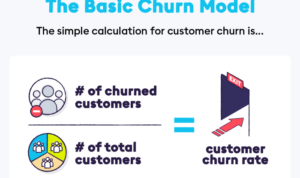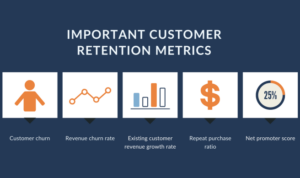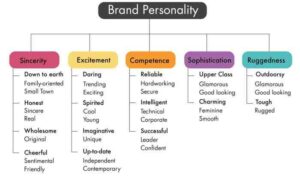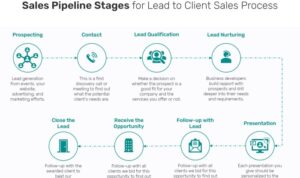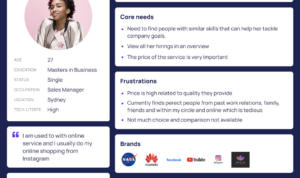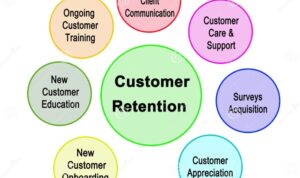Customer Feedback Loops take the spotlight in this digital age, providing businesses with a goldmine of information to elevate their products and services. From understanding customer preferences to driving impactful changes, these loops are the key to unlocking success.
Importance of Customer Feedback Loops
Customer feedback loops are crucial for businesses as they provide valuable insights into the customer experience, allowing companies to understand what their customers want and need. By collecting feedback through various channels such as surveys, reviews, and social media, businesses can identify areas for improvement and make informed decisions to enhance their products or services.
Improving Products or Services
Customer feedback loops play a vital role in improving products or services by highlighting areas of strength and weakness. Companies can use feedback to identify trends, preferences, and pain points among their customers, enabling them to make necessary adjustments to meet customer expectations. For example, a software company may receive feedback on a particular feature that is difficult to use, prompting them to redesign the feature for better usability.
Examples of Companies
- Amazon: Amazon utilizes customer feedback loops through product reviews and ratings to continuously improve its offerings. By listening to customer feedback, Amazon can enhance product descriptions, packaging, and delivery processes to meet customer expectations.
- Apple: Apple incorporates customer feedback into its product development process, allowing them to create innovative and user-friendly products. By analyzing customer reviews and suggestions, Apple can make design changes and introduce new features that resonate with their target market.
- Starbucks: Starbucks gathers customer feedback through its mobile app, social media platforms, and in-store surveys to enhance the overall customer experience. By listening to customer suggestions, Starbucks can introduce new menu items, improve service efficiency, and personalize promotions to drive customer loyalty.
Types of Customer Feedback

Customer feedback comes in various forms, each providing valuable insights into customer preferences and satisfaction levels. Let’s explore the different types of customer feedback and their significance in understanding customer needs.
Surveys
Surveys are structured questionnaires designed to gather specific information from customers. They provide businesses with quantitative data on customer opinions, preferences, and experiences. Surveys help identify trends and patterns in customer behavior, allowing businesses to make data-driven decisions to improve their products or services.
Reviews
Customer reviews are personal opinions shared by customers about their experiences with a product or service. Reviews offer qualitative insights into customer satisfaction and highlight areas for improvement. Businesses can use reviews to build credibility, address customer concerns, and enhance their reputation.
Social Media Comments
Social media comments are spontaneous reactions from customers on platforms like Facebook, Twitter, and Instagram. They provide real-time feedback on products or services and help businesses gauge customer sentiment. Social media comments allow businesses to engage with customers directly, resolve issues promptly, and build brand loyalty.
Direct Messages
Direct messages are private communications between customers and businesses. They offer a personalized channel for customers to provide feedback, seek assistance, or express concerns. Direct messages enable businesses to address individual customer needs, improve customer satisfaction, and foster long-term relationships.
Quantitative vs. Qualitative Feedback
Quantitative feedback involves numerical data and metrics, providing businesses with measurable insights into customer satisfaction levels and preferences. On the other hand, qualitative feedback offers in-depth insights into customer experiences, emotions, and perceptions, helping businesses understand the ‘why’ behind customer feedback. While quantitative feedback is valuable for tracking performance and trends, qualitative feedback offers rich contextual information for strategic decision-making.
Implementing Effective Feedback Collection: Customer Feedback Loops
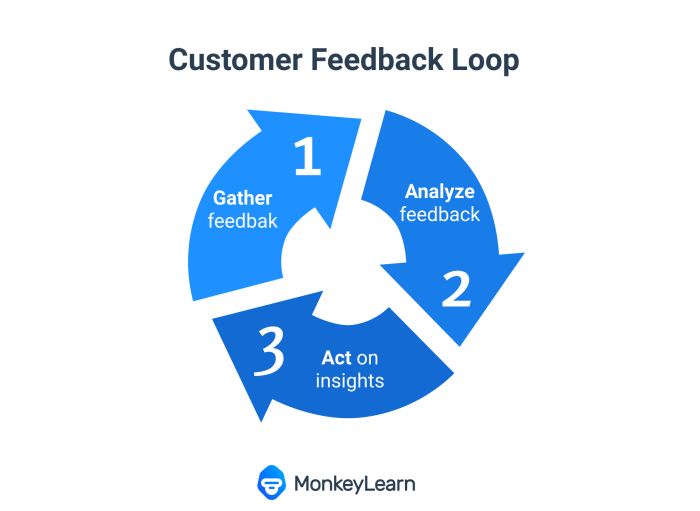
To effectively collect feedback from customers, businesses need to implement strategies that make it easy for customers to share their thoughts and opinions. This not only helps in improving products and services but also enhances customer satisfaction and loyalty.
Utilizing Multiple Channels for Feedback Collection
- Utilize online surveys through email campaigns or website pop-ups to gather feedback from a wide range of customers.
- Encourage social media engagement by creating polls or surveys on platforms like Twitter and Facebook.
- Implement feedback forms on your website to capture real-time feedback from visitors.
Tools and Platforms for Streamlining Feedback Collection
- Use customer feedback management tools like SurveyMonkey or Typeform to create and analyze surveys efficiently.
- Implement customer feedback software such as Medallia or Qualtrics to collect and organize feedback data.
- Utilize social media listening tools like Hootsuite or Sprout Social to monitor customer feedback on various platforms.
Best Practices for High Response Rates and Quality Feedback
- Keep feedback forms short and concise to encourage more responses.
- Incentivize feedback by offering discounts or rewards for completing surveys.
- Respond to customer feedback promptly to show that their opinions are valued.
- Analyze feedback data regularly to identify trends and make data-driven decisions.
Analyzing and Acting on Feedback
After collecting customer feedback, the next crucial step is to analyze the data to extract valuable insights that can drive positive changes within the business.
Steps for Analyzing Customer Feedback Data
- Organize feedback data into categories such as product quality, customer service, and overall experience.
- Utilize data visualization tools to identify trends and patterns within the feedback.
- Look for common themes or issues that are mentioned frequently by customers.
- Analyze sentiment to gauge overall customer satisfaction levels.
Prioritizing Feedback and Implementing Changes
- Identify feedback that has the most significant impact on customer experience and prioritize addressing those issues first.
- Create an action plan based on customer suggestions and feedback data to implement necessary changes.
- Communicate with customers about the changes being made in response to their feedback to show that their opinions are valued.
Success Stories of Utilizing Customer Feedback, Customer Feedback Loops
Company XYZ used customer feedback to revamp their mobile app interface, resulting in a 20% increase in user engagement within a month.
Restaurant ABC implemented menu changes based on customer feedback, leading to a 15% increase in overall customer satisfaction scores.
